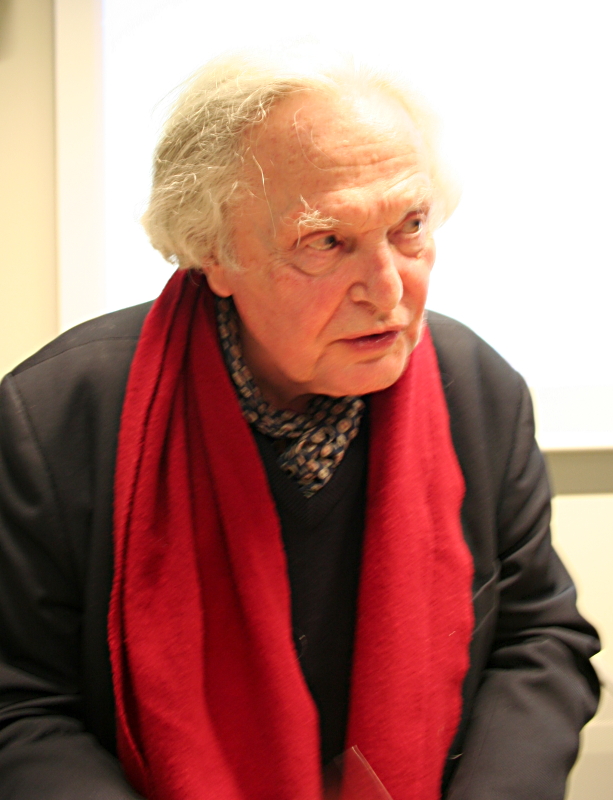
Frank Popper, Spirit Rector of Kinetic Art, is celebrating his 100th birthday
Bottomless
Like Vilém Flusser, two years younger, Frank Popper comes from the city of Kafka, Dvořák, the Golem, over whose Moldau bridge the philosophers and Kabbalists moved, entangled in infinite fluency. Frank's parents had a "seat" in the Old New Synagogue. His early Judaism was connected with the idea that he would be the owner of an art object. At the age of three he comes to Vienna, where the mother came from. At the age of 20, he fled to England with his brother. The family is murdered.
In the "Bottomess" of the emigre summoned by Flusser, Frank Popper finds a home in art. He builds friendships with artists, moves to Paris in the early 1950s. When I meet him in the 1980s, he lives, works in an artists „Dichterklause“ on the Quai des Grands Augustins overlooking Notre Dame. He had written a doctoral dissertation from his encounters with artists, especially the kinetic movement, light and environment, and taught until 1985 as professor of aesthetics and the arts at the University of Paris VIII.
When the Paris May broke out in 1968, instead of lectures and seminars, the student discussion forums, enmeshed in infinite fluency, determined the course, Frank was able to rise from the podium in the afternoon and say goodbye: "I am going to have my cup of tea!“ However, when he wrestled for a new location of art and its protagonists, his Art - action and participation masterpiece, which appeared seven years later in New York, revealed 300 pages packed with comprehensive social analyzes and images of the "break - up years". ("Signature Years" in the words of Peter Weibel, see kunstzeitung No.1, 2018, p.13.) One wished that this central art-social book would find a new edition.
For many of his contemporaries, Frank Popper, who turns 100 on 17 April this year, remains the esprit recteur of kinetic art, to which he has curated historical exhibitions such as KunstLichtKunst in Eindoven 1966 or Lumière et mouvement in Paris 1967. Partly with his wife, art historian Aline Dallier, he has until recently written key books on electronic art. He became an encyclopedist of an Enlightenment based on art.
JÜRGEN CLAUS
